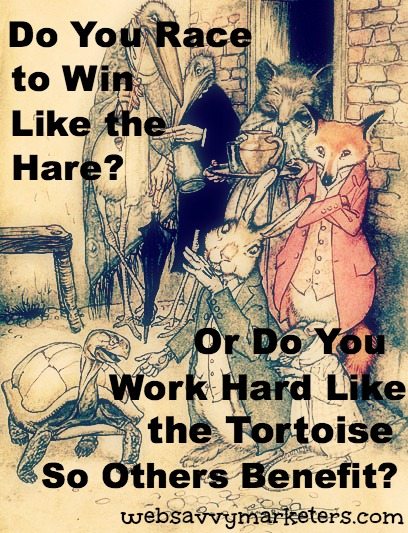 To be successful, it’s commonly assumed that a Taker personality will outperform and overshadow a Giver personality.
To be successful, it’s commonly assumed that a Taker personality will outperform and overshadow a Giver personality.
Givers are people who help others without worrying how they will benefit; they are other-focused and motivated by altruism.
Takers look out for themselves first; they are quick to take credit and self-promote, believing that the only way to achieve is to be better than everyone else.
In Social Trigger’s Derek Halpern podcast interview with Adam Grant on his latest book, Give and Take, Grant reveals the surprising truth about generosity and success.
It’s no surprise that most of us fall somewhere in the middle, believing that a good deed will be equally matched with a reciprocating act. The Matchers of the world operate with expectations of balance and fair exchange.
It makes sense that the common conception is Takers are the winners and take all, with Matchers falling in step just behind.
The Long Run Wins the Race
When you take in the big picture, this is not true. Grant explains that there’s a short run and long run reversal.
This reminded me of the story of The Tortoise and the Hare. The Hare self-aggrandizes from the moment he appears, whereas the Tortoise shows his goodwill immediately.
Takers imitate the Hare and take the fast route based purely on self-interest and winning, often burning a bridge or two in the process.
The Giver behaves like the Tortoise, willing to take the time to work hard, as in helping colleagues and customers, building trust and goodwill along the way.
The long run of the Giver eventually pays out like it does with the Tortoise. The investment of time, knowledge, and resources builds the social capital which will cheer a Giver on and create individuals who are genuinely glad of his or her success.
Tell the truth. Who were you rooting for, the Tortoise or the Hare?
How to Be a Giver Not a Taker and Still Succeed
Grant tells us that true Givers combine what Bill Gates called the two great forces of human nature: self-interest and caring for others.
If you care about the people and causes you are giving to, and you are really interested in and enjoy that form of helping, this mix of motives will sustain a giving nature.
Are Givers really concerned for others or are they more worried about their image? Grant calls anyone who gives solely to boost their image a Faker. They are in reality a Taker who is creating an “aura of generosity to mask their self-serving intentions.”
As for Matchers, if you’re giving for purely Matcher reasons – because you expect payback – then it will appear very transactional and people will see through it, and their appreciation level won’t be as high as it is with a Giver.
“You can easily judge the character of a man by how he treats those who can do nothing for him.”—Malcolm S. Forbes.
Jobs Vs. Gates: Giver or Taker?
Halpern asked Grant whether or not he believed Steve Jobs was a Taker and Bill Gates is a Giver. Grant conceded that Jobs had Taker moments in his career relationships, but he was extremely customer-centric in his giving.
“Maybe the Giver-Taker spectrum is not the right axis in evaluating him,” Grant decides.
What Halpern and Grant agreed upon, however, was the Giver legacy versus the Taker legacy. A Giver will be remembered long after they are gone, but a Taker will be forgotten, even vilified, regardless of their achievements.
The Key to Getting a Giver Personality
No matter what your tendencies are, you can be a Giver and begin to experience the benefits of building giving relationships. Just ask yourself the all-important question, “What do I desire?”
The key to being a giver is to unlock the secret to your desire. For inspiration on finding your hidden desire, watch this video by Alan Watts, “What if Money Was No Object?”
How would you enjoy spending your life? Find the answer to these questions and you will learn how to be a Giver not a Taker, achieving your goals as well as enjoying the journey along the way.
It’s far more than a race to the top. As Hemingway said, “It is good to have an end to journey toward; but it is the journey that matters, in the end.”